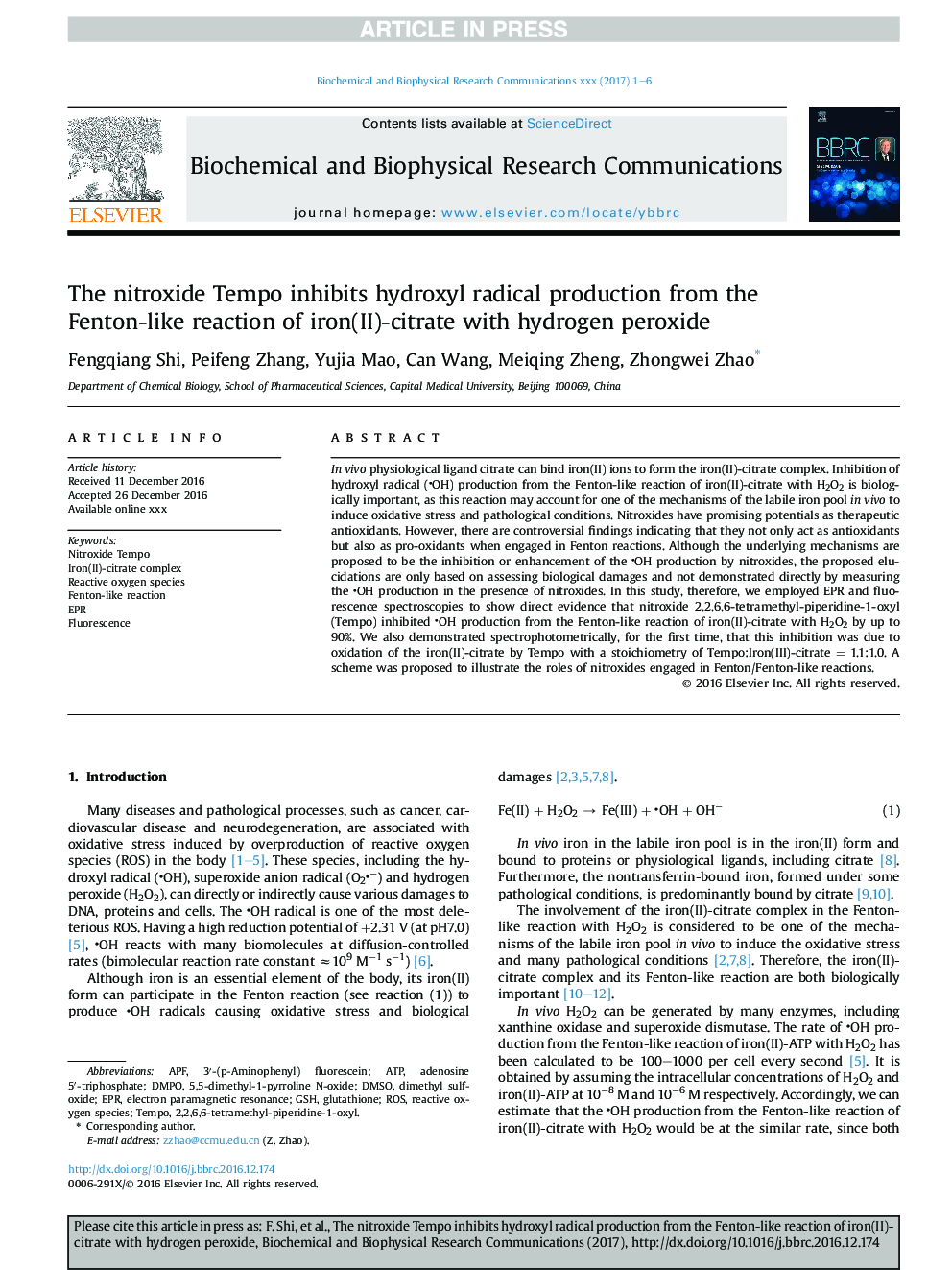| Article ID | Journal | Published Year | Pages | File Type |
|---|---|---|---|---|
| 5505571 | Biochemical and Biophysical Research Communications | 2017 | 6 Pages |
Abstract
In vivo physiological ligand citrate can bind iron(II) ions to form the iron(II)-citrate complex. Inhibition of hydroxyl radical (OH) production from the Fenton-like reaction of iron(II)-citrate with H2O2 is biologically important, as this reaction may account for one of the mechanisms of the labile iron pool in vivo to induce oxidative stress and pathological conditions. Nitroxides have promising potentials as therapeutic antioxidants. However, there are controversial findings indicating that they not only act as antioxidants but also as pro-oxidants when engaged in Fenton reactions. Although the underlying mechanisms are proposed to be the inhibition or enhancement of the OH production by nitroxides, the proposed elucidations are only based on assessing biological damages and not demonstrated directly by measuring the OH production in the presence of nitroxides. In this study, therefore, we employed EPR and fluorescence spectroscopies to show direct evidence that nitroxide 2,2,6,6-tetramethyl-piperidine-1-oxyl (Tempo) inhibited OH production from the Fenton-like reaction of iron(II)-citrate with H2O2 by up to 90%. We also demonstrated spectrophotometrically, for the first time, that this inhibition was due to oxidation of the iron(II)-citrate by Tempo with a stoichiometry of Tempo:Iron(III)-citrate = 1.1:1.0. A scheme was proposed to illustrate the roles of nitroxides engaged in Fenton/Fenton-like reactions.
Related Topics
Life Sciences
Biochemistry, Genetics and Molecular Biology
Biochemistry
Authors
Fengqiang Shi, Peifeng Zhang, Yujia Mao, Can Wang, Meiqing Zheng, Zhongwei Zhao,
